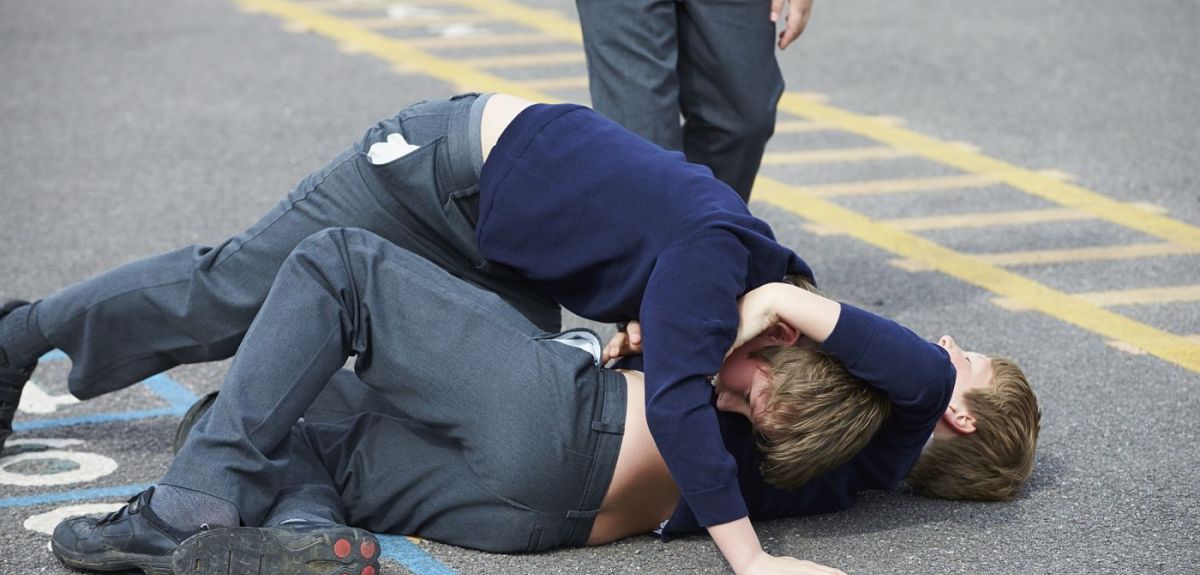
Roots of aggression
Why are men more aggressive than women?
There are two competing theories. However, a study by Oxford University researchers has found that both may actually be right.
Doctor Ralf Wölfer is part of the Department of Experimental Psychology. He recently published the results of a study across schools in three European countries, which mapped networks of aggression to see what they could tell us about differences between boys and girls.
I asked Ralf about the theories and how his research is bringing them together.
OxSciBlog: First of all, what are the two theories?
Ralf Wölfer: The two theories are sexual-selection theory and social-role theory. They’re really the competing sides of the nature-nurture debate. Sexual-selection theory says that males are competing for reproductive success, so are more aggressive generally and especially to other males. It’s human nature.
Social-role theory says that differences are sociological, based on traditional divisions of labour. Socialisation shapes gender specific identities, expectations and behaviour. So it’s nurture – how we’re brought up.
Traditionally, the two theories have been seen as competing. I’m not the first to use both theories – there have already been others saying we should consider both. But this paper took an empirical approach.
OxSciBlog: What was that approach?
Ralf Wölfer: We wanted to look at intra-sex and inter-sex aggression in a given environment. To avoid confusion, it might help to think of these as same-sex aggression and other-sex aggression.
We used detailed social network analysis to disentangle aggression across almost 600 social networks in different environments – teenagers in school classes for this study. We were able to score these environments for same-sex and other-sex aggression.
We hypothesised that a dual-theory approach, with sexual-selection theory explaining same-sex aggression and social-role theory explaining other-sex aggression, was better than applying just one.
For that dual-theory approach to be valid, we were testing two hypotheses:
Firstly, that males are more aggressive than females to same-sex individuals, and also more aggressive to other-sex individuals.
Secondly, that predictors derived from sexual-selection theory would explain differences between males and females in same-sex aggression whereas predictors derived from social-role theory would explain differences in other-sex aggression.
OxSciBlog: So what were these predictors?
Ralf Wölfer: For example, for social-role theory, you would expect boys in those groups with more traditional beliefs about masculinity to exhibit more other-sex aggression. For sexual-selection theory, you would expect to see more aggression in groups with a higher proportion of males to females, as there’s more competition among the boys.
Once we had the scores from the social network analysis we applied predictors from the two theories to see how well they could explain the differences in those scores.
OxSciBlog: How did you do the social network analysis?
Ralf Wölfer: This is one thing that was a useful lesson from the study design. Usually social network analysis is used to map friendship networks – positive relationships. In this case, the study used it to map a negative network of aggression. What we found is that it worked well when applied in this way.
The participants were from the Children of Immigrants Longitudinal survey in Four European Countries, a group that contained more than 10,000 students in nearly 600 classes. Each of those classes is a separate environment that can be compared with the others.
The study group was originally set up to compare children of immigrant and non-immigrant populations so there was a high proportion of students from ethnic minority groups. Many have parents from Turkey, Iraq and Morocco. That was important because we could look beyond a purely western European sample to a more varied group.
We then asked each student to nominate aggressors. Mapping aggression has often been done by self-reporting but we chose to use peer reporting as we felt it would be more accurate. We asked ‘who is sometimes mean to you?’
 |
| Sample aggression network of a school class. Black circles represent boys, and white triangles represent girls. Arrows indicate aggression nominations, with the direction of the arrow indicating the person nominated as an aggressor and the start of the arrow indicating the nominator. |
By counting nominations from boys and girls for each individual, we could give them a same-sex aggression score and an other-sex aggression score. Then we could determine an average same-sex aggression score and other-sex aggression score for each class.
As expected, on average males were more aggressive to both sexes although there were some classes where females were more aggressive.
OxSciBlog: When explaining these aggression scores, what did the results show?
Ralf Wölfer: They showed that our dual-theory hypothesis was right!
We found that sexual-selection theory explained differences in same-sex aggression. For example, those classes with a higher proportion of boys to girls saw more male-male aggression, while classes with a higher proportion of females or with a more equal social structure saw less male-male aggression.
Social-role theory explained differences in other-sex aggression. For example, classes with more traditional views of gender roles saw more male-female aggression, while classes with less traditional gender norms saw less male-female aggression.
OxSciBlog: In the end, what does that mean?
Ralf Wölfer: It is empirical evidence to confirm that we need to consider both biological and social explanations for aggression. Sexual-selection and social-role theory are both necessary. It is also important to differentiate between same-sex/intra-sex and other-sex/inter-sex aggression as the roots of each may be different. One way to do this is to use aggression networks, as demonstrated in this study.